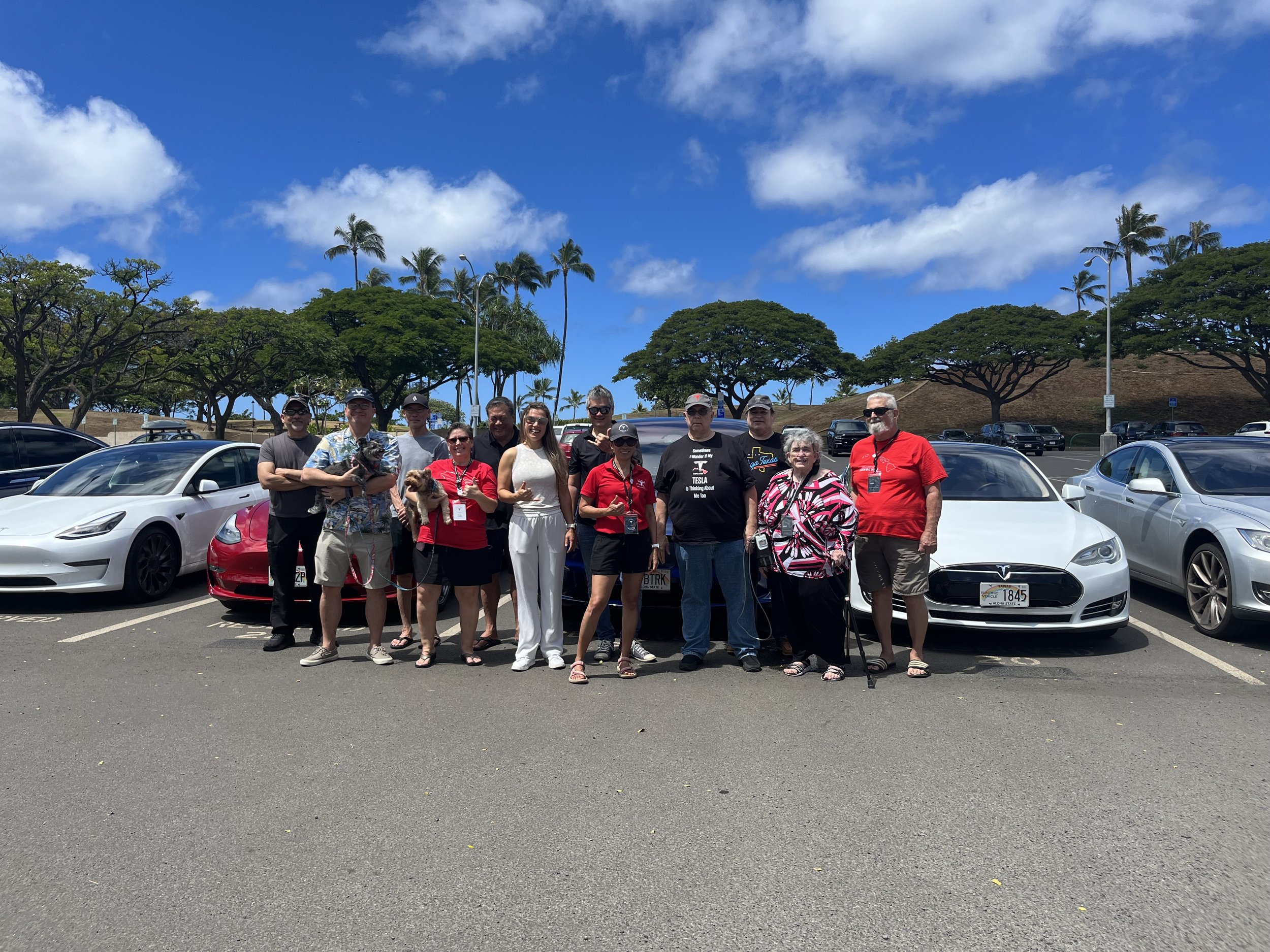
An Opportunity to Clean Up Heavy Fleets
Our clean transportation transition has focused primarily on passenger cars. However, a smaller number of vehicles – medium and heavy vehicles like freight trucks, buses, and port equipment contribute a disproportionate amount of pollution. They have a significant impact on local air quality. They often operate extended hours, often in communities already suffering from higher pollution and associated health burdens. Cutting diesel near schools, along bus routes, and in port areas is a public health investment and a climate win.
The Hawaiʻi State Energy Office’s Diesel Replacement Rebate program is a tool to tackle this problem.

Hawaii is Getting Another NEVI Fast Charger. Good News for Maui EV Drivers!
Hawaiʻi is adding another essential piece to its fast-charging network – a DC Fast Charging Hub at Kapalua Airport on Maui. This will be the third fast charging hub funded through the National Electric Vehicle Infrastructure (NEVI) program. It follows the NEVI hubs at the Kahului Park and Ride on Maui and the Aloha Tower Marketplace on Oʻahu. This addition is welcome in West Maui and will support residents and visitors alike.

A gasoline superuser can save thousands each year with an EV.
A recent study by the Ulupono Initiative found that a small fraction of Hawaii's drivers account for a quarter of the gasoline consumed each year. This suggests we can make immediate progress in reducing our dependence on gasoline imports, reducing emissions and local air pollution, and saving residents money by focusing on these drivers.

That’s a wrap - National Drive Electric Month 2025
September 12 - October 12 was National Drive Electric Month, a celebration of electric vehicles and their role in enabling our transition to a more sustainable energy future. One of the most effective ways to help others make the switch to an electric vehicle is to hear about the many benefits of EVs from actual owners and to experience one firsthand. This is what Drive Electric Month achieves across the nation.
This year, Hawaii EV and partners hosted events across Hawaii to raise awareness of the numerous benefits of electric cars, trucks, motorcycles, and other vehicles. Many mahalos to our volunteer EV ambassadors, local sponsors, and national organizers for making these events happen. Special thanks to our Governor and Mayors for declaring Drive Electric Month in Hawaii.

NEVI News
The U.S. Department of Transportation has just released “interim final” guidance for the NEVI (National Electric Vehicle Infrastructure) Program. This is effective August 13, 2025, and the comment period ends August 27, 2025.
This guidance offers the opportunity to streamline and speed up the deployment of the NEVI Hubs. It will be up to each State to optimize its policies regarding deployment, which is a positive. Overall, this creates the opportunity for Hawaii to accelerate its NEVI deployment.

EV Fires are Rare and Manageable
Electric vehicle adoption continues to rise in Hawaii. We now have 37,000 of them on our roads. They are paving the way to a cleaner and more resilient energy future. As with any emergent technology, there are questions and concerns raised that may create unnecessary hurdles to adoption.
One concern area that we’ve heard more about lately is the risk of fires. The Matson decision to pause shipments of EVs and recent headlines have heightened concerns about EV fire risk. The fact is that EV fires are rare and can be managed with modern firefighting technologies and techniques.
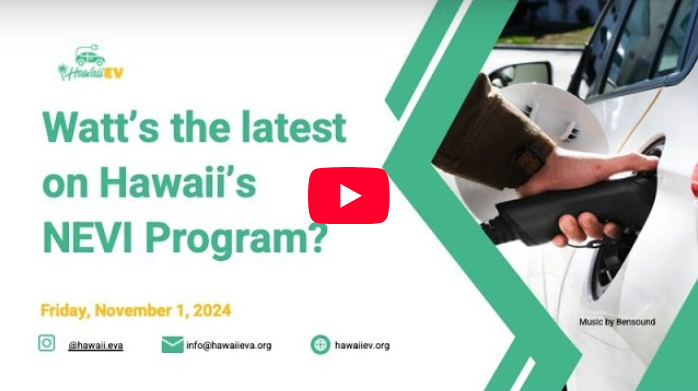
Watt’s up with Hawaii’s NEVI Chargers?
Did you know Hawaii is installing a 44 DC Fast Charger network?
That’s forty-four 150kW Fast Chargers in eleven charging hubs. Two hubs have already been deployed and work is in progress for the others.
The program is led by Robin Shishido, Deputy Director for Highways at the Hawaii Department of Transportation. He joined Hawaii EV to share information about the program and address questions regarding the schedule, equipment, and the NEVI initiative.

Drive Electric Week 2024
Hawaii EV successfully celebrated National Drive Electric Week (NDEW) with meet-ups across the state. The events promoted the importance of sustainable transportation, particularly electric vehicles, in accelerating our transition to a clean, sustainable future.
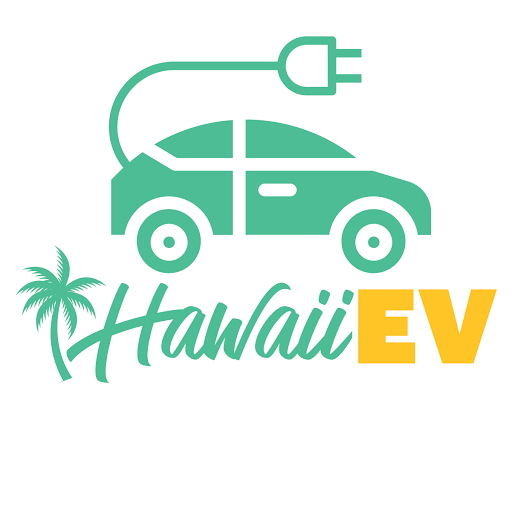
Hawaii is a Perfect Place for EVs
Electric vehicles (EVs) are becoming popular in Hawaii, with more residents enjoying their lower operating and maintenance costs, clean air, and environmental benefits. The State now has over 33,000 registered EVs, with a year-over-year growth rate of around 25%. With several affordable 200+-mile EVs, generous rebates available for many buyers, many vehicle types, and lower fueling and maintenance costs, many are driving EVs.
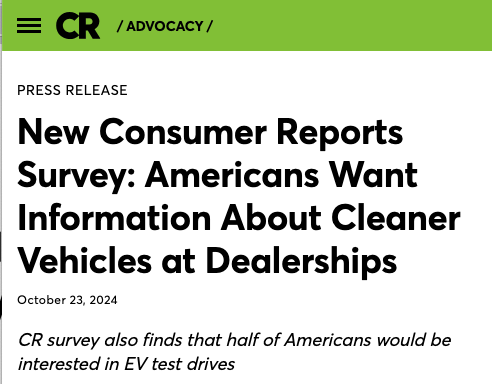
Dealers: Your next customer may be a test drive away!
I came across a Consumer Reports survey that reveals that many consumers are eager to test drive an electric vehicle (EV) when visiting a car dealership, even if they are not interested in an EV at the time. As many EV owners know, the hands-on experience driving one is a key factor in purchasing one. The driving experience - acceleration, quiet and smooth ride - and the many other benefits (lower maintenance and fuel costs and zero tail-pipe pollution) help consumers decide to make their next vehicle electric.

National Drive Electric Week is almost here!
Hawaii EV is celebrating National Drive Electric Week - September 27 - October 6 - with events across the State. We are partnering with Drive Electric Hawaii and other partners to promote the importance of sustainable transportation, particularly electric vehicles, in accelerating our transition to a clean, sustainable future.
Through our chapters (Kauai EV, Maui Nui EV,Big Island EV, and our newly formed Oahu EV team), Tesla Hawaii Club, and partners, we ensure that communities across the state will participate in the celebration and learning opportunity.
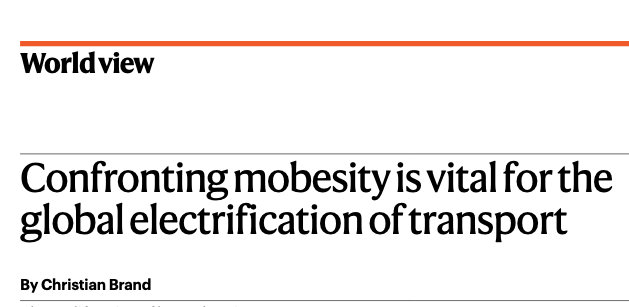
“Mobesity” Threatens Sustainable Transportation Journey
Hawaii EV has highlighted the need to ‘right-size’ our EV purchases. While this may have been challenging in the past, there are many options today – from tiny cars to trucks and SUVs – so there is an EV for just about any need. Right-sizing, a strategy that also applies to gas cars, simply means buying a vehicle that is fit for purpose – not too small or large. An electric vehicle that is too big will mean spending more than is necessary, using more electricity than required, replacing tires more frequently, and contributing to a larger environmental footprint.
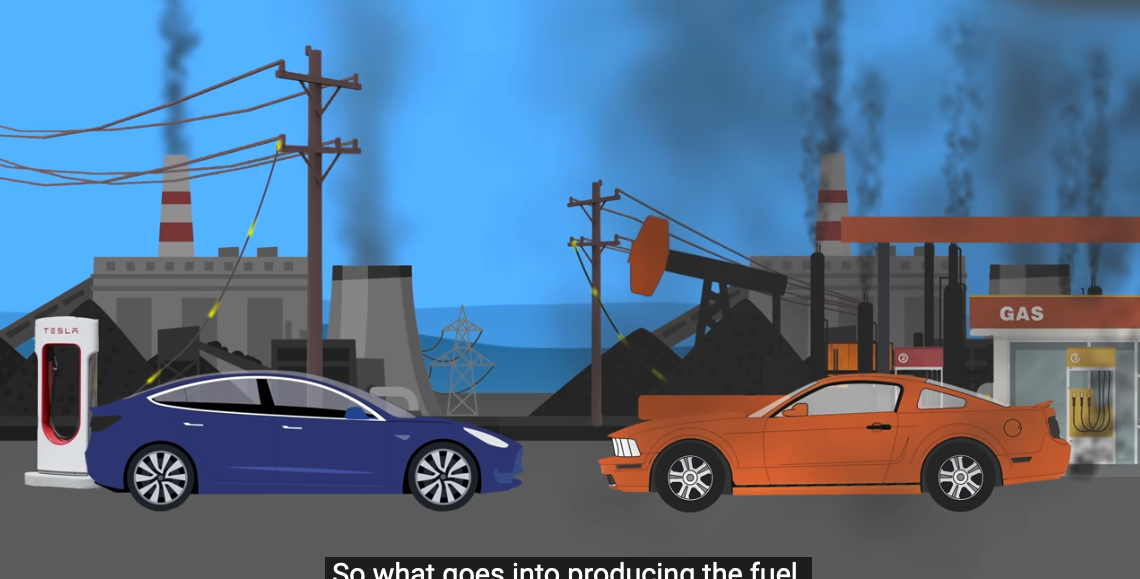
“EVs are bad for the Environment”
We’ve heard it time and time again—FUD (fear, uncertainty, and doubt) that casts a negative shade on the electric vehicle. This has resulted in consumer skepticism about EVs and a drag on the movement to transition our transportation system from the archaic, inefficient, and polluting internal combustion engine framework to the simple, modern, and efficient electric vehicle.
Here are other examples of this nonsense:
“EVs run on electricity, and the electricity grid is powered by fossil fuel, so your EV is not as clean as my hybrid.”
“ EVs are expensive and only for the rich.”
“EVs run on electricity, and electricity is expensive, so it will be expensive to charge EVs.”
“ EV batteries will are worse for the environment.”
Fortunately, there is an abundance of facts to counter these myths and misconceptions. A Google search will reveal many articles highlighting the facts that dispute common misconceptions and misrepresentations about EVs. Several are listed below.

How many EVs are cruising Hawaii?
Adoption is accelerating across Hawaii, with very positive YoY growth. This is very positive, but more must be done to accelerate adoption. Hawaii consumes nearly 40,000,000 gallons of gasoline and diesel each month, and gas vehicles still represent about 94% of registered vehicles.
Image courtesy of unsplash.com/@robinpierre

Good news for VW fans!
This just in: The VW ID.4 qualifies for the $ 7,500 federal tax credit! Thanks to domestic manufacturing (in Tennessee) and their utilization of SK On batteries (manufactured in Georgia), the ID.4 is now on the list of EVs that qualify for the full credit.
Image courtesy of Andrea De Santis.
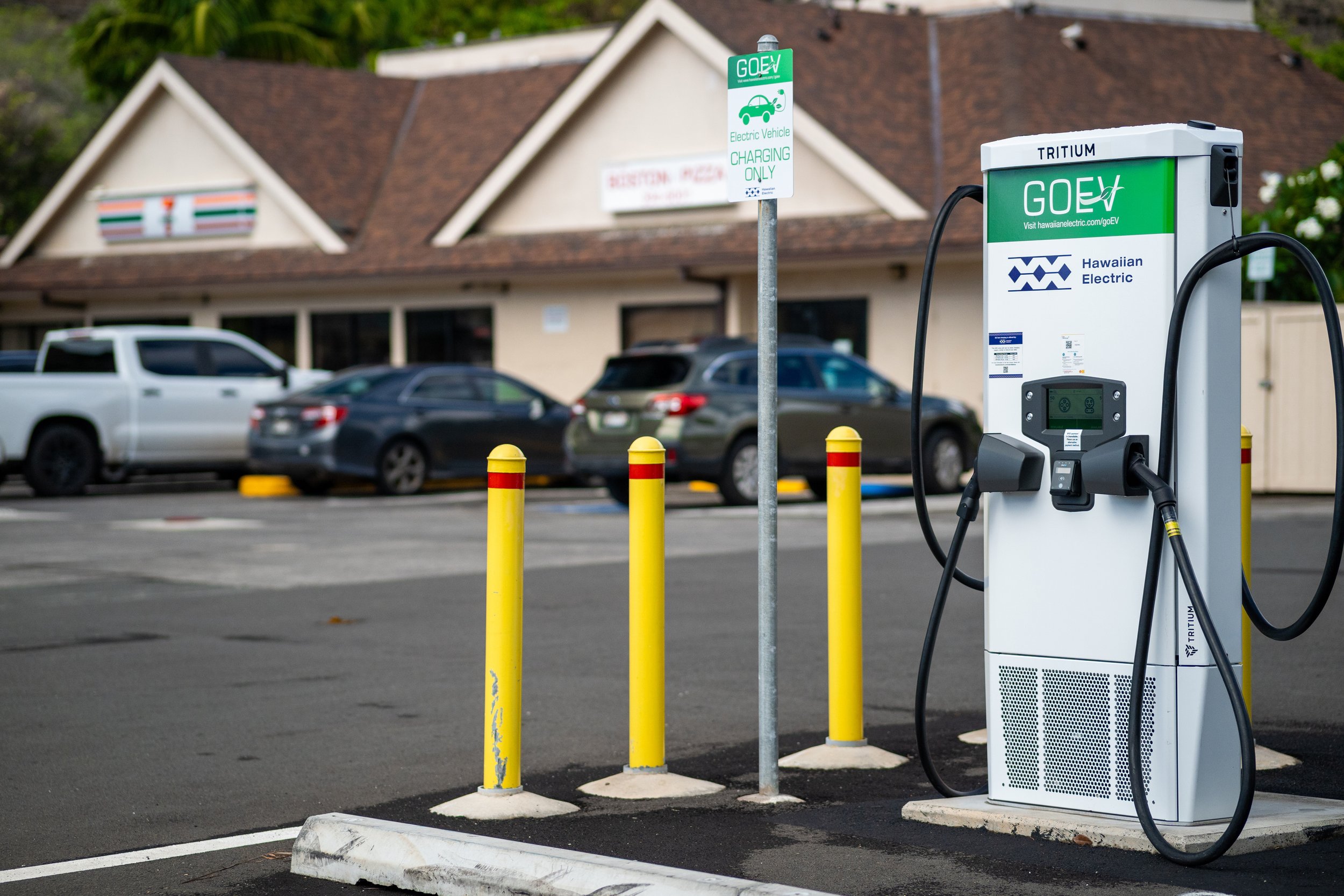
Hawaiian Electric DCFC Upgrade Update
Hawaiian Electric is progressing on its roadmap to upgrade its Efacec DC Fast Chargers network! This includes replacing aged equipment and doubling up stations at certain locations.
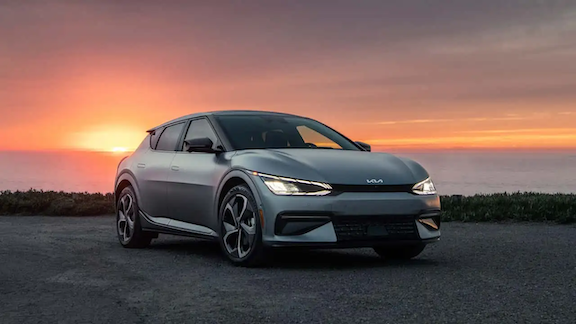
A peek into the 2024 Kia EV6
InsideEVs offers a peek into the Kia’s 2024 Kia EV6 offerings. Check out details on price, range, and features across several trim levels. The EV6 is a popular EV and a great option for those looking for an electric crossover.
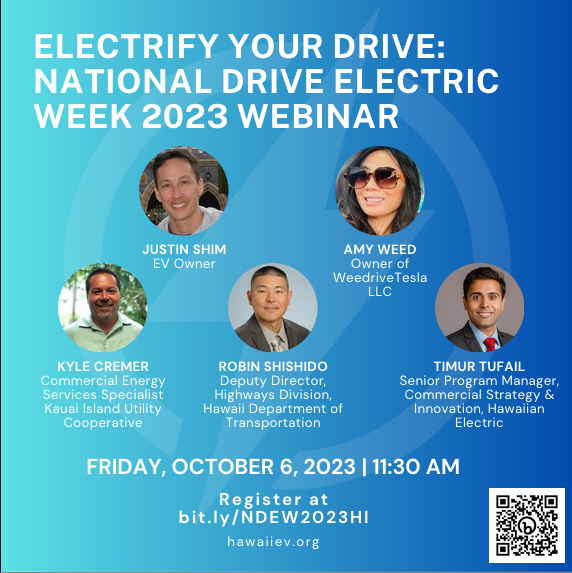
Public Charging in Hawaii
In case you missed Hawaii EV’s October 6 webinar, you can view the recording here. The webinar capped off our National Drive Electric Week celebration.
View to learn about the latest on EV adoption in our state, local experiences with public charging, and efforts by our utilities and the State to enhance our charging infrastructure.
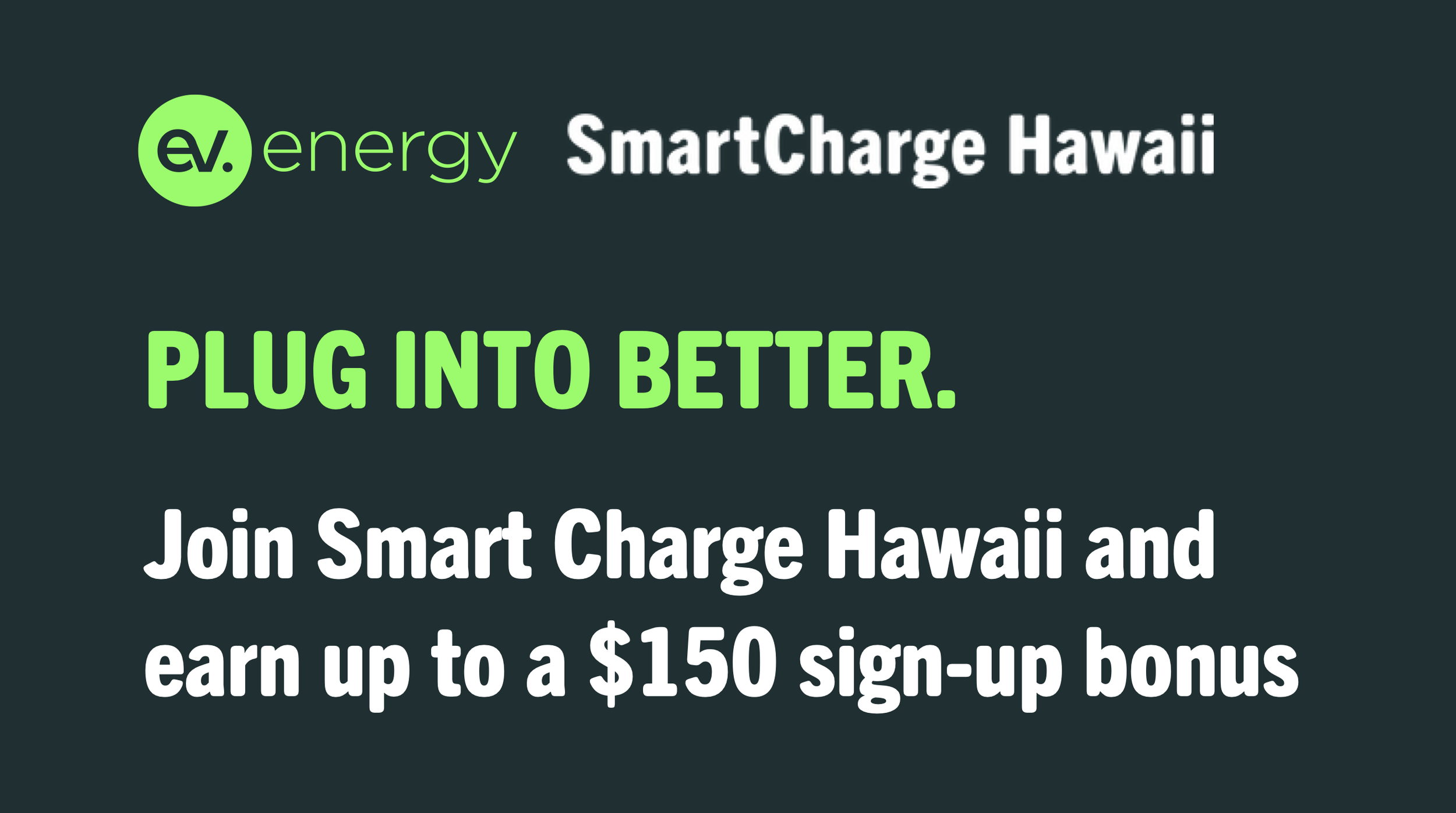
Enroll in Smart Charge Hawaii today
Enroll in Smart Charge Hawaii today
The Smart Charge Hawaii program, accessed via the ev.energy app, allows eligible electric vehicle drivers to track home charging costs and earn rewards for sharing EV charging data to improve power grid reliability across the islands. Sign up to earn your $75 enrolment incentive, plus an additional $75 completion bonus after 12 months on the program.
The ev.energy app is available for free to all Hawaii residents on iOS or Android. The app works by wirelessly connecting to an integrated EV or charger.
